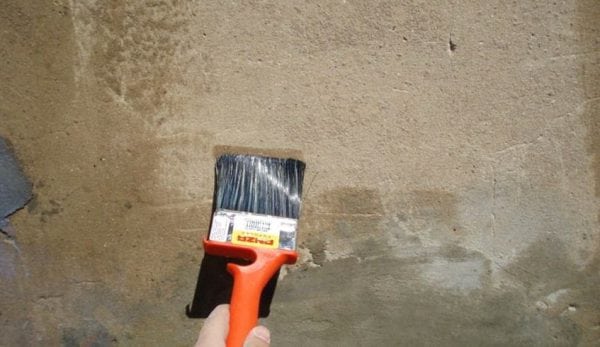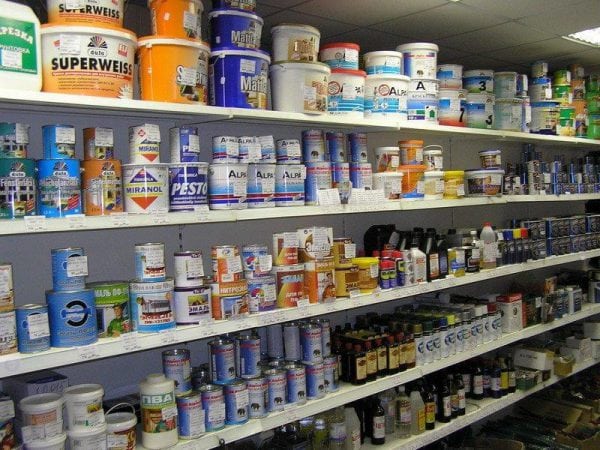The primer is called the basis of high quality, which is used for a wide variety of finishing works. The use of this material is necessary in order to remove dust, dirt or degrease the surface.
- Why is a wall primer necessary
- Surface types
- Types of primer
- How to choose a primer
- Preparation and the necessary tool
- How to primer walls for painting

The main objectives of this material can be called: degreasing, dust removal, as well as ensuring high adhesion for surfaces to be treated. In addition, the primer of the walls for painting provides the possibility of uniform application of coloring compositions and glue. Priming can be safely called a mandatory part of high-quality repairs.
to contents ↑Why is a wall primer necessary
The primer covering the surface allows saving paint coatings due to increased adhesion. This provides additional wear resistance and water resistance to all products that are strengthened with its help.
Protecting the treated surfaces from bacteria is also another task that primers successfully cope with. They contain special additives that prevent the reproduction of various harmful organisms. And if mold was noticed in the room, then do not forget to walk on it with an antibacterial primer, and you will get rid of it with a high degree of probability.
to contents ↑In principle, it does not matter what type of work will be carried out, the processing of the walls with a reinforcing mixture can be called the necessary stage if you have to lay tiles, paint, etc.
Surface types
As a rule, when performing repairs drywall paint, plaster, wallpaper for painting. Despite the fact that the plaster is a wet coating, ready for subsequent finishing work, experts recommend priming it before applying the paint. This is due to the fact that the surface treated with the primer will not crack and crumble, thanks to the reinforcing polymer components.
In addition, plaster is a porous material that can absorb a lot of liquid and therefore priming will help reduce the consumption of coloring material.
to contents ↑Types of primer
Modern manufacturers of building materials offer consumers a huge number of different types of primers, which differ in their characteristics depending on the purpose.
Depending on the application, the primer can be divided into several varieties:
- alkyd (used for surfaces made of wood and metal walls);
- acrylic (universal and perfect for a variety of surfaces);
- aluminum (used only when working with wooden surfaces);
- polyvinyl acetate (used only before applying paints and other coatings having a special composition or for priming concrete surfaces, wood or plaster);
- silicate (used to process silicate brick or decorative plaster);
- epoxy (used if necessary, deep impregnation of concrete surfaces).
to contents ↑Based on the classification of the above, it can be noted that before choosing a mixture, it is necessary to determine the surface material that will be processed.
How to choose a primer
When choosing a primer, you need to pay attention to the manufacturer, the cost and related characteristics of the technical type. The deeper the indicator of the level of absorption in the base, the better this material will be to achieve any goals.
The most common and often used type of such a mixture can be called an acrylic type primer. It is a universal material, can be used to prepare walls for painting with water emulsion paint and is perfect for all types of work both indoors and outdoors. And if you don’t know which primer is best for you, take the universal one.
to contents ↑Preparation and the necessary tool
The method of applying the mixture is universal and does not particularly differ from the application of other finishing materials. Immediately before applying the primer, any surface is cleaned of the old coating, cleaned, sanded, and also degreased. It is worth noting that the number of approaches to priming walls is always strictly individual, but this must be done at least twice.
To apply the primer you will need:
- roller;
- brush;
- atomizer;
- capacity.
In each case and for each specific task, different tools can be used. For example, you can apply the mixture on a brick surface with a brush, but on smooth walls or walls made of drywall with a roller.
to contents ↑The spray gun is also an excellent tool for solving such problems, but is used less often, since after using it it is quite difficult to wash the entire room.
How to primer walls for painting
Priming the walls before applying water-based emulsion and any other paint is an obligatory step. The best option for this type of work can be called the use of a universal primer. The universal mixture has all the necessary properties and can be perfect for processing a wide variety of surfaces.
The primer for painting the walls is applied in a certain sequence:
- primed;
- putty;
- primed a second time.
First of all, a little solution is poured into the pan, in order to facilitate the quality of future work. The roller is rolled through the tank, and excess material is removed using a special tank.
Do the work carefully. When priming the wall, the flow rate of the mixture is calculated 150 ml per 1 sq.m. After applying the layer, it makes sense to wait a bit and only after 30-50 minutes will the level of absorbency of the wall be understood. Only after that it will be possible to understand exactly how many layers are best applied for high-quality wall strengthening. After the primer has completely dried, you can begin the process of painting the walls.
It is worth noting that when performing repair work and before painting surfaces, it is necessary to process the walls with a primer. But it is necessary to do this correctly and only with the kind of mixture that will be as suitable as possible for the material from which the walls are made.






